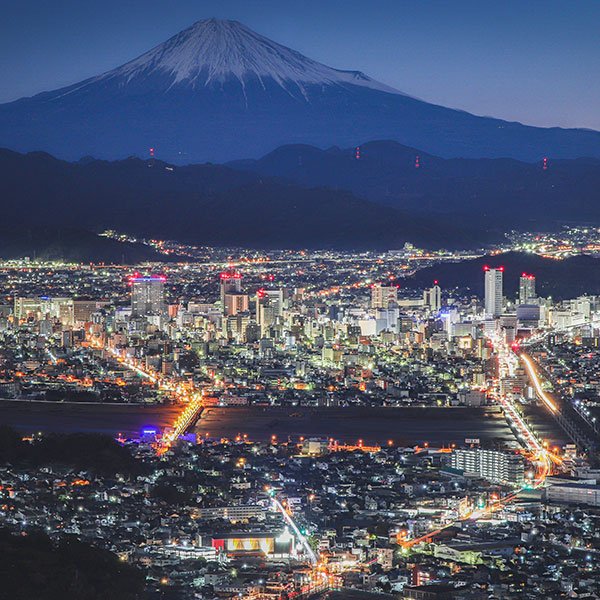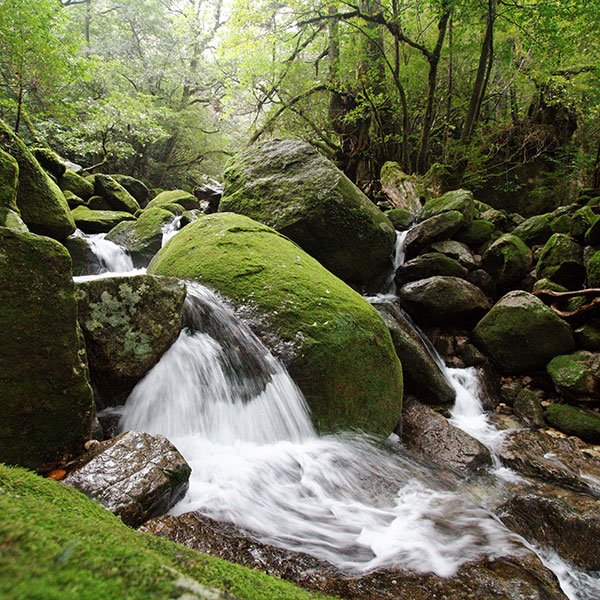15 Best Places to Experience Feudal Japan
by Lucy Dayman | TRAVEL
© Luke Peternel / Creative Commons, Narai-juku
As a nation home with such a long, diverse, and unique history, exploring Japan isn't really exploring unless you've taken some time to explore its more traditional side. From feudal castles to traditional merchant towns, and island villages, there's so much history right at your doorstep, here's where to find some of Japan's best historic destinations from the feudal era.
If your interests lie in the more distant past, you should also check out these 7 Best Places to Experience Ancient Japan!
1. Himeji Castle
Himeji Castle by Vladimir Haltakov
Also known as White Heron thanks to its almost luminescent white facade, Hyogo's Himeji Castle is widely regarded as the country's most elegant and visually spectacular castle still in existence. This world heritage site was completed in 1609 and has survived war, earthquakes and fires standing proud and tall, guarding over the western approach to Kyoto (map), Japan's former capital. The castle, stunning all year long, attracts swarms of visitors year-round, looking to get a glimpse of this incredible structure up close and stroll through its labyrinthian tunnels and pathways. If you’re ready to head to Himeji, find out All You Need to Know Before You Visit!
2. Taketomi Island
Taketomi Island
Sitting off the coast of Ishigaki Island (map), Taketomi Island is home to a small Ryukyu village populated by traditional Okinawa style houses, many of which double as minshiku (local homestays). Most of these homes feature rustic red clay roofs dotted with Shisa guardians, small god-like figures that look something between a lion and a dog. These Shisa are icons of Okinawa's Ryukyu culture. Well worth an daytrip, or an overnight adventure from Ishigaki (one of the 20 Best Japanese Islands You Have to Visit), this island is home to plenty of authentic traditional attractions like water buffalo cart rides, stores, restaurants and craft workshops as well as pristine white sand beaches.
Where to Stay on Taketomi Island?
Okinawa's pristine islands are home to plenty of luxurious tropical style resorts, but none are quite as impressive as Hoshinoya's Taketomi outpost. This sprawling cluster combines the traditional designs of the island like the red-tiled roofs with more hotel-style finishes, yet still blending seamlessly with the surroundings. You can opt for either Japanese or western style rooms, while the restaurant serves nouvelle French cuisine using locally sourced island produce, a perfect blend of elements.
3. Higashi Chaya District & Nagamachi, Kanazawa
The historic city of Kanazawa is growing in popularity for many folks who want a taste of traditional Japanese charm without the Kyoto level crowds. One of the best locations to immerse yourself in the spirit of Kanazawa culture is the Higashi Chaya District (see map), a corner of the city dedicated to classic teahouses many of which housed mesmerizing geisha performances. About a 30-minute stroll from the Higashi Chaya District you'll find Nagamachi, the city's samurai town. Sitting at the foot of Kanazawa Castle, this pocket of Kanazawa is home to many well-cared for samurai residences, as well as museums and tourist attractions like Nomura-ke, and the Shinise Kinenkan Museum where guests can learn all about the people who crafted history and culture of this fascinating city.
4. Imperial Palace East Garden, Tokyo
© Kakidai / Creative Commons, Seimon Ishibashi Bridge
Hungry for a taste of traditional culture in one of the world's futuristic cities? Then the Imperial Palace East Garden is well worth an addition to your itinerary. Open to the public, these gardens are part of the Imperial Palace's inner area and the former site of Edo Castle, the once home of the Tokugawa shogun who ruled between 1603 to 1867. Emperor Meiji also lived in this castle for 20 years before relocating to the Imperial Palace. Take a stroll around the grounds, and you'll find the remnants of the foundation of the former castle tower sitting on the top of a hill near the wide lawn. Close to several stations (see map), a visit here is an easy addition to any Tokyo itinerary.
Where to Stay Near the Imperial Palace?
© K5
Located in East Tokyo, not far from the Imperial Palace Gardens, K5 is an exciting new hotel that's taken up residence inside the striking 1920s Daiichi Bank. The hotel collaborated with Stockholm-based architecture and design practice Claessson Koivisto Rune to turn this one bustling business centre into a stylish international hotel with spacious communal public spaces and an alluring underground bar.
5. Edo Wonderland Nikko Edomura, Nikko
Located in the Kinugawa Onsen area of Nikko (map), Edo Wonderland Nikko Edomura is a time-travelling amusement park built to look and feel like a 17th-century, Edo-era city complete with Blacksmith and Armor Repair Shop. Here guests can wander through the streets populated by townspeople in traditional clothing, and the occasional ninja, and explore the immersive museum displays as they learn about what life was like for the people of Nikko all those hundreds of years ago.
6. Naramachi, Nara
Known in Japanese as Nara Town, this area of Nara was a bustling merchant district during the 15th century (see map). These days it's just as bustling, but with guests visiting the area to admire the impressive, well-preserved shops and warehouses that now house an eclectic family of cafes, restaurants, museums and boutiques. Not far from the here is where you'll find Gangoji Temple, a Unesco World Heritage Site and one of the most important temples during the Nara Period.
7. Gion, Kyoto
© Tianshu Liu
Possibly the most famous destination in Kyoto, the Gion district located east of the Kamo River was once a rest stop destination for pilgrims on a journey to visit the Gion Shrine (modern-day Yasaka Shrine – see map). Today it's home to well-maintained historic destinations like Shirakawa canal, lined with historic buildings, the geisha central Hanami Lane, Kenninji Temple and Yasaka Shrine. If you want to know more about the area, we've previously published a guide to some of the area's must-see highlights.
Where to Stay in Gion, Kyoto?
Kyoto's royal ryokan, Yoshida Sanso was once the residence of Japanese Prince, Higashi-Fushimi. This magnificent complex, built in 1932, is home to a small selection of rooms each maintaining a traditional charm and meticulously preserved history, but with an appreciation for contemporary luxury. Located at the foot of Mt. Yoshida, its positioning is perfect for those who want a slightly remote Kyoto experience that's close enough to the action but far out enough to feel like a secret retreat.
8. Takayama
Nestled between the mountain peaks of the Hida region in Gifu Prefecture, Takayama is fast becoming one of the nation's more popular historical destinations, thanks in large part to its accessibility to Shirakawago folk village and its incredible local cuisine. During the feudal ages home to some of the most highly skilled carpenters in the country, which you can see in the meticulously preserved houses and stores that line the streets today. While the Hida province (where Takayama sits – see map) was settled sometime during the Jomon Period, the town has a definite Edo-era feel. If you're planning a visit to this picturesque town, be sure to combine it with a night at a traditional thatched roof gassho zukuri house in Shirakawa-go.
9. Matsumoto Castle
The Nagano city of Matsumoto is probably most well known for being the home of the stunning, Matsumotojo (or Matsumoto Castle – see map) one of Japan's most complete and architecturally impressive original castles. Surrounded by a wide moat and backdropped by Nagano's snow-capped mountain peaks, the castle is impressive year-round, but especially so in spring when it's framed with the soft pink cherry blossoms. A quick stroll from away sits Nakamachi, a quaint street lined with classic old warehouse buildings that were once the business epicentres for the town's merchants, now shops and cafes.
10. Oharaimachi, Ise
© JNTO, Oharaimachi
Running up to the gates of the inner Ise Shrine (map), Oharaimachi is the perfect prelude to Japan's most sacred site. This kilometre-long pathway is flanked on either side by old-world style restaurants and stores selling gifts, snacks and arts and crafts to pilgrims who travel from far and wide to soak up Ise's power. At the halfway point of the journey is where you'll find Okage Yokocho, a small street which was built in 1993 was crafted to imitate the culture and buildings of traditional, iconic Japan (between the Edo Period to early Meiji Period). And of course you should visit the Ise Shrine itself, one of Japan’s most Extraordinary Shrines.
Where to Stay Near Ise?
Luxury villa accommodation with a ryokan style ambience, Auberge Yusura is a tranquil retreat just over 6 miles / 10 kilometres from the Ise Grand Shrine. The complex features a picturesque communal garden, and a restaurant serving up top quality Japanese multi-course cuisine. Blending Japanese design with modern finishes, it has the best of both worlds.
11. Edo Tokyo Open Air Architectural Museum, Tokyo
Located in western Tokyo, about 25 minutes from Shinjuku by train (see map) is the Edo Tokyo Open Air Architectural Museum, a miniature world showcasing some of the city's most iconic buildings. Many of the buildings you'll find here were relocated and reconstructed as a way to preserve the architectural history of the city in the face of ongoing threats like earthquakes, fires and war. An immersive exploration of the city's history, this relatively unknown destination is an easy half-day trip destination and an excellent way to see another side of Tokyo.
12. Narai, Nagano
© Luke Peternel / Creative Commons, Narai-juku
Narai is a scenic post town, and one of the best-preserved pieces of history on the historic Kiso's Nakasendo Trail. During the Edo-period Narai was a popular rest destination for those making the pilgrimage trek between Tokyo and Kyoto as it marked the halfway point (map). Colloquially known as Narai of a Thousand Houses, this post town is home to the longest cluster of buildings in the area, many of which were former residences and now house minshiku, souvenir stores and restaurants. When you're in town, keep a lookout for Nakamura Residence, it's one famous example of Narai's impressive residences.
13. Kochi Castle
Constructed in the 17th century, Kochi Castle (map) is one of Japan's 12 remaining original castles, and the only castle in the country where the tenshu (castle tower) and honmaru (main keep) are still standing. Built as a home to the Yamauchi lords, who ruled over the area - which at that time was known as Tosa - the castle was quite heavily rebuilt in 1748 following a devastating fire. One of its most fascinating features is the castle's shachi figures. Shachi are small creatures that have the body of a fish with the head of a dragon. Legend has it that these particular figures are guardians designed to protect the castle from fire.
14. Kurokawa Onsen, Kyushu
Sitting right in the centre of Kyushu, not far from the striking volcanic Mount Aso is where you'll find Kurokawa Onsen (see map), a traditional onsen down that oozes old-Japan charm but still exists as a functioning hot spring resort town. While this town is filled to the brim with scenic sights and steaming hot onsen baths, one particular highlight is Yamamizuki, an outdoor bath where guests can soak in the open-air tub as they take in the river and mountain views. If you plan to stay for a while, and you should pick up a ¥1300 tegata (wooden pass) for unlimited access to many of the town's participating baths.
15. Sawara Merchant Town, Narita
© Nipponia, Sawara Merchant Town
Perfect for those who are hungry for a taste of old-world Japan, but don't have the time or budget to visit Kanazawa and Kyoto, Narita City is home to one of the most well-kept tourist secrets in Japan: Sawara (see map). Around 2,000 years ago, this area was a popular fishing destination and a gathering spot for fishermen in the region. Over time it's developed into a sake brewing town and today is a living snapshot of Japan's architectural history with its well-maintained houses and stores that line the scenic canal. Take a day trip from Tokyo, or even better, stay the night at this fascinating and underrated city.
Where to Stay in Sawara Merchant Town?
© Nipponia
The boutique hotel Nipponia is an excellent way to embrace the traditional charm of Sawara's stunning warehouses without foraging luxury. Nipponia's concept is to buy and renovate traditional merchant homes and warehouses, doing them up and by combining Edo-era architecture with modern hotel-style amenities offer an accommodation experience quite unlike any other. They have a few locations in Sawara so you're bound to find one to suit.
JO SELECTS offers helpful suggestions, and genuine recommendations for high-quality, authentic Japanese art & design. We know how difficult it is to search for Japanese artists, artisans and designers on the vast internet, so we came up with this lifestyle guide to highlight the most inspiring Japanese artworks, designs and products for your everyday needs.
All accommodation suggestions are independently selected and individually reviewed. As a Booking.com Associate, Japan Objects may earn from qualifying bookings.













TRAVEL | April 26, 2024